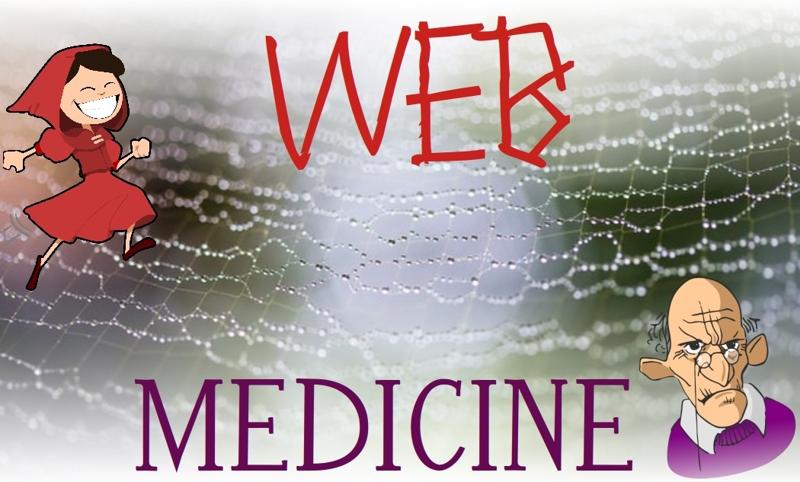
Image created using Photo by Milada Vigerova on Unsplash
Nana: Whats all that noise your making in the supply closet?
Nina: I am looking for a long handle broom.
Nana: Whatever for? Are you going to finally do something useful, like clean the house? Or better still, fly off to Hogwarts for a year?
Nina: I am trying to collect spider webs. I need loads of them.
Nana: Good heavens! Whatever for?
Nina: To make bandages Nana. The next time, you or I get a cut or scrape, I want to be prepared.
Nana: Keep them for yourself. I don’t want to be infected by whatever freaky micro-organisms they carry.
Nina: You're wrong, Nana. Spider webs have antimicrobial properties keeping both bacteria and fungus at bay. Since spider silk is rich in proteins, spiders have evolved to develop a chemical antiseptic and antifungal coating, to protect it from fungus and bacteria. That’s partly why webs make such good bandages.
Nana: There’s more than one reason?
Nina: Of course, Nana. Spider silk is also rich in Vitamin K, which also helps with clotting. Besides, spider silk is stronger than steel.
Nana: What are you talking about? It’s so fragile.
Nina: No way! It is one of the sturdiest materials found in nature. At sixth the density of steel, it has comparable tensile strength making it a much lighter yet strong material for building. It can also be stretched to five times its relaxed length without breaking.
Nana: You make it sound like a wonder material. Perhaps Adrian Tchaikovsky's spider civilization with silk based technology isn’t so far fetched after all.
Nina: You haven’t even heard most of it yet. Did you know that spider silk can withstand temperatures ranging from -40C to 220 C. Spider silk also has a property called super contraction when exposed to water or very high humidity, that allows the web to survive under the weight of raindrops and dew by behaving like weak rubber under tension.
Nana: From steel to rubber, what a fiber! No wonder Athena was so jealous of Arachne.
Nina: And no wonder now scientists are trying to create artificial spider silk. And the most amazing part is, one group in Cambridge has created a material to mimic some of the cool properties of spider silk, mostly using water! Another group in biomedical research is working on creating artificial spider silk to make effective bandages for slow healing wounds because silk fibers can accelerate tissue regeneration. Yet another research group is planning to use it for skin grafting to help burn victims.
Nana: Wow! Who knew Itsy-Bitsy spider could do so much more than climb a water spout.
Nina: Not Itsy-Bitsy spider for sure. Haha. But Adrian Tchaikovsky probably does. Annabeth knew about its tensile strength when she tricked Arachne into making giant chinese handcuffs.
This post is a part of the #NinaAndNana series I co-host with Lavanya Srinivasan. Her posts can be found here.